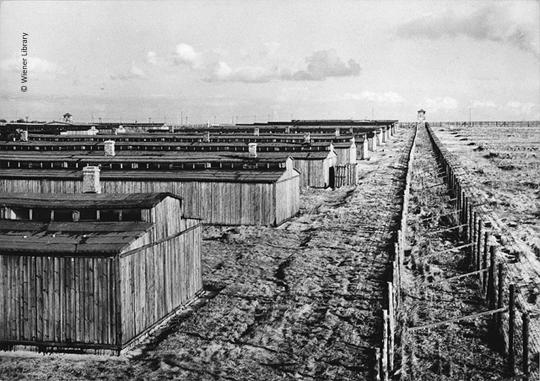24 July 1944: Soviet forces arrive at Majdanek Concentration Camp
On 24 July 1944, Soviet forces arrived at Majdanek Concentration and Death Camp in Eastern Poland. The camp was the first major concentration camp to be liberated from Nazi control, and Soviet officials invited journalists to see the horrors of Nazi oppression.

Majdanek death camp Postwar. Image: © Wiener Library
Some historians estimate that between 109,000 and 130,000 people were murdered or died due to the poor conditions in Majdanek Concentration and Death Camp.
The site had been established after the invasion of the Soviet Union in 1941 just outside the city of Lublin. As the SS moved into the newly occupied territories they undertook plans to forcibly harness the population to the Nazi war machine. In October 1941, around 2,000 Soviet prisoners of war were taken to the camp to begin construction, with Jewish forced labourers from the Lipowa Street Camp being brought over later. Conditions were brutal and prisoners were routinely worked to death, or shot when they became too weak to continue.
In 1942 gas chambers were brought into operation at Majdanek, and subsequently prisoners were mass-murdered with a poisonous gas called Zyklon B. In 1943, following resistance in the Treblinka and Sobibor camps as well as the Warsaw Ghetto uprising, the SS decided to murder all Jews located in the wider area. On 3 November 1943 over 18,000 Jews were assembled and then shot dead outside the camp. Throughout the massacre, the camp loudspeakers played music to mask the sounds of the killings.
Following the massacre, Majdanek continued to function as a concentration camp until the Soviet advance in 1944. Although the Nazis evacuated the camp, the Soviet advance was so rapid that, unlike many other camps, the SS were not able to destroy the evidence of their crimes. The final liquidation of the camp took place on the 22 July, 1944 when most prisoners were killed or sent to Auschwitz-Birkenau. On the night of 22 – 23 July 1944, soldiers of the Red Army came upon Majdanek where, on 24 July, they freed around 500 prisoners and took the city of Lublin. To this day, Majdanek remains the best preserved reminder of the horrors of the Nazi death camps.


